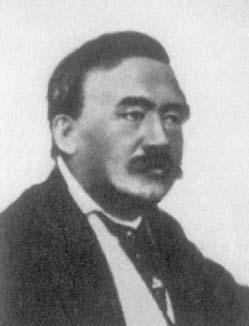


 تاريخ الرياضيات
تاريخ الرياضيات
 الرياضيات في الحضارات المختلفة
الرياضيات في الحضارات المختلفة 
 الرياضيات المتقطعة
الرياضيات المتقطعة
 الجبر
الجبر
 الهندسة
الهندسة 
 المعادلات التفاضلية و التكاملية
المعادلات التفاضلية و التكاملية 
 التحليل
التحليل
 علماء الرياضيات
علماء الرياضيات |
Read More
Date: 23-10-2016
Date: 23-10-2016
Date: 26-10-2016
|
Died: 17 September 1891 in Vienna, Austria

There are different versions of Józeph Petzval's name, and, in addition to the one given here, he is often known as Jozef Maximilian Petzval. While giving different versions, let us also remark that the town of his birth is Spisska Bela which is sometimes written as Szepesbéla. It was in Hungary when Petzval was born there but it is now in Slovakia.
Jozef was the son of a schoolmaster and he attended primary school in Késmárk (now Kezmarok in Slovakia) and secondary school in Podolin (now Podolinec). At first he performed badly in mathematics having no interest in the topic but, once he had found an interesting book on the subject, his performance improved markedly. After leaving school he went to Kosice (named Kassa at the time) where he attended the College for a while but he was financially poor and was forced to undertake work as a tutor to earn money to survive.
In 1826 Petzval entered the University of Pest to study philosophy and mathematics. Later, in 1872, the town of Pest was to join with the town of Buda on the opposite bank of the Danube to form Budapest. After graduating from the University Petzval was appointed to the city of Pest as an expert in flood prevention and drainage. He undertook this work for seven years and showed reals talents in his job.
Petzval taught mechanics and mathematics at the University of Pest from 1832 and he became a professor in advanced mathematics at the University of Pest in 1835. Then, two years later, he accepted a chair of mathematics at the University of Vienna.
Petzval worked for much of his life on the Laplace transform. He was influenced by the work of Liouville and wrote both a long paper and a two volume treatise on the Laplace transform and its application to ordinary linear differential equations. His study is thorough but not entirely satisfactory since he was unable to use contour integration to invert the transform.
But for a student of Petzval we might today call the Laplace transform the Petzval transform. Petzval fell out with this student who then accused Petzval of plagiarising Laplace's work. Although this was untrue, Boole and Poincaré, influenced no doubt by the quarrel, called the transformation the Laplace transform. Szénássy writes [1]:-
Students liked Petzval and considered him a true firm and helpfdul friend, but his colleagues suffered much from his strong criticism.
Petzval is best remembered for his work on optical lenses and lens aberration done in the early 1840's (Petzval curvature is named after him) which allowed the construction of modern cameras. Petzval produced an achromatic portrait lens that was vastly superior to the simple meniscus lens then in use.
In [2] his work in optics is described as follows:-
[At the University of Vienna] he studied in detail L M Daguerre's invention, the so-called daguerreotype, and took on shortening its exposure time from minutes to seconds. In 1840, his extraordinary mathematical talent allowed him to assess and build an anastigmatic with six times greater luminosity. This Petzval highly luminous early form of photo lens was used by the enterprising Viennese optician Voigtländer, who launched its mass production and won a silver medal at the World's Exhibition Fair in Paris. Petzval also perfected the telescope and designed the opera glasses.
Petzval won many distinctions for his work. In addition to the medal referred to above, he was elected a member of the Academy of Sciences of Vienna in 1851, of the Union of Czech Mathematicians and Physicists, and he received the platinum medal of Ch Chevalier from France. A street in Vienna bears his name as does a crater on the far side of the Moon.
Books:



|
|
|
|
لصحة القلب والأمعاء.. 8 أطعمة لا غنى عنها
|
|
|
|
|
|
|
حل سحري لخلايا البيروفسكايت الشمسية.. يرفع كفاءتها إلى 26%
|
|
|
|
|
|
|
جامعة الكفيل تحتفي بذكرى ولادة الإمام محمد الجواد (عليه السلام)
|
|
|